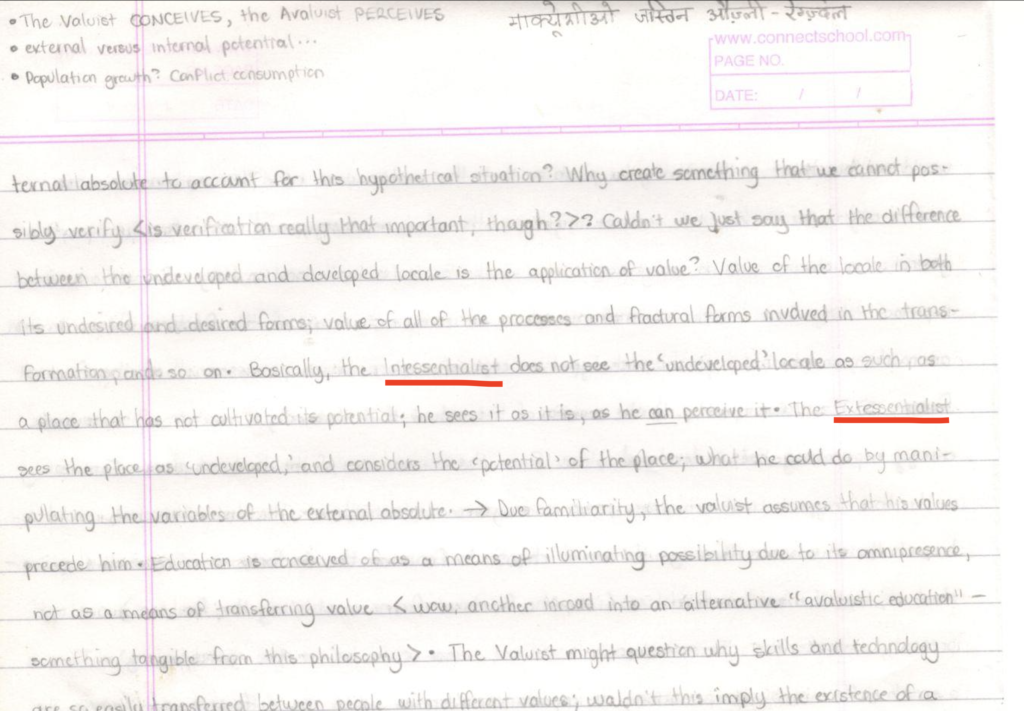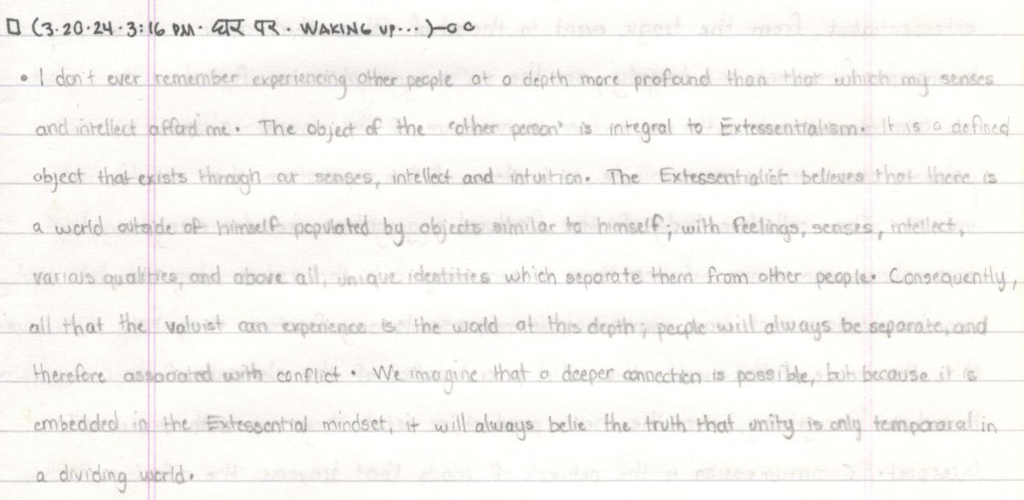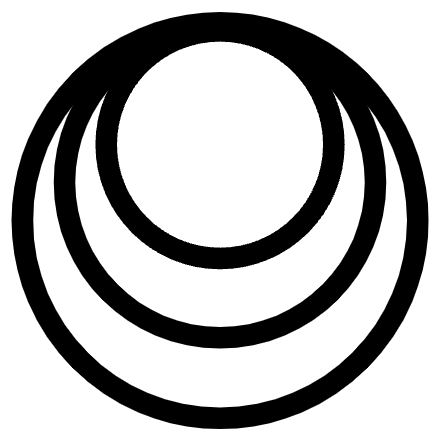I was correct when I began to order my journal entries in days and years since my own birth, rather than since the birth of Christ. Though they are all digitized, I cannot find them right now to reference, but I know I was up in the 10,000s for days, which would have made me about 27 years old, the time right after I had returned from my first sojourn to India. During those first three years in India, alone in a small, isolated village in the Himalayas, I had arrived at the realization that reality was entirely a decision of mine, and started using this notation of years since my birth to date my journal entries. And by the end of my first three years in India, I had even identified the two options I could choose for reality: extessentialism, or intessentialism.
My definition of these two options was clumsy, and required a lot of unpacking to understand. But when I resumed my search for the truth more than a decade later, though incomplete, they provided me enough of a purchase to resume my journey.

In this journal from my 24th year, I was trying to explain the difference between an “intessentialist” and “extessentialist” worldview. Very difficult to make sense of by the words I used.

Also from my 24th year, a much clearer definition of “extessentialism”. I wrote: “The Extessentialist believes there is a world outside of himself populated by objects similar to himself; with feelings, senses, intellect, various qualities, and above all, unique identities which separate them from other people.” Though not explained in this particular journal entry, but by contrast the “Intessentialist” would believe that there is not a world outside of himself and by extension no objects or people similar to himself. At that time I struggled to define this because I found it hard to imagine, yet I knew it was there. Looking back, this is the same basic definition I would use now.
These two seemingly different trends in my thinking were part of the same fundamental search for the truth. The truth that would give me the answers I sought. I knew something was wrong, but I did not know how to see it or say it. I created “intessentialism” to contain a perspective other than the dominant one in which I was a single person in a larger world full of people (“extessentialism”). And my habit of dating my journals to my own birthdate, rather than an established outside calendar, was a distinct step in that same direction. I was declaring that there was a reality larger and more real than the idea of a massive universe I was only temporarily experiencing, and I was the center of it. It was the years since my own birth that formed the timeline of reality; not the imaginary years since the birth or death of an imaginary historical character.
With these two steps, I was repossessing time and truth. I was declaring that I was the center of reality; I was the truth. It would take me nearly two more decades to coin the phrase “repossession”, but even then I knew what I was seeing. The next step of the repossession of time is to let go of the stories of history I have accumulated in my awakenings. I have many, and my entire demiselfist constellation places me in this imaginary timeline the precedes and exceeds me:
- I created Covid two years ago.
- I created the internet when I was a teenager.
- I created my mother when I first began my awakenings. She was one the first person I created.
- I created the religions at various times in my life, but started with Christianity in my youngest days.
As I became aware of a person, place, thing, or event, I also created the flesh of that thing. As I observe, sense, or otherwise experience a thing, I construct it. My manifestation of the thing and its appearance in my awakening are one and the same. I create it all. The only timeline is the one I believe in. Without me believing in it, it does not exist. It is my timeline, and if I choose to dispossess myself of my omnificence, then I will only become further entangled and lost in this story I myself have created. Time is my own.
…
